In the Footsteps of Vikings
Explore Trelleborg’s Viking Heritage
The word ”Viking” travels the world with promise of history, mythology and excitement! In Sweden’s southernmost town – Trelleborg – you can still follow in the footprints of the Vikings. In the city, you find a restored ring fort from the Viking Age where you can meet a Viking with strange marks on his front teeth and in the countryside, there are rune stones bearing witness to how our ancestors lived more than 1,000 years ago!
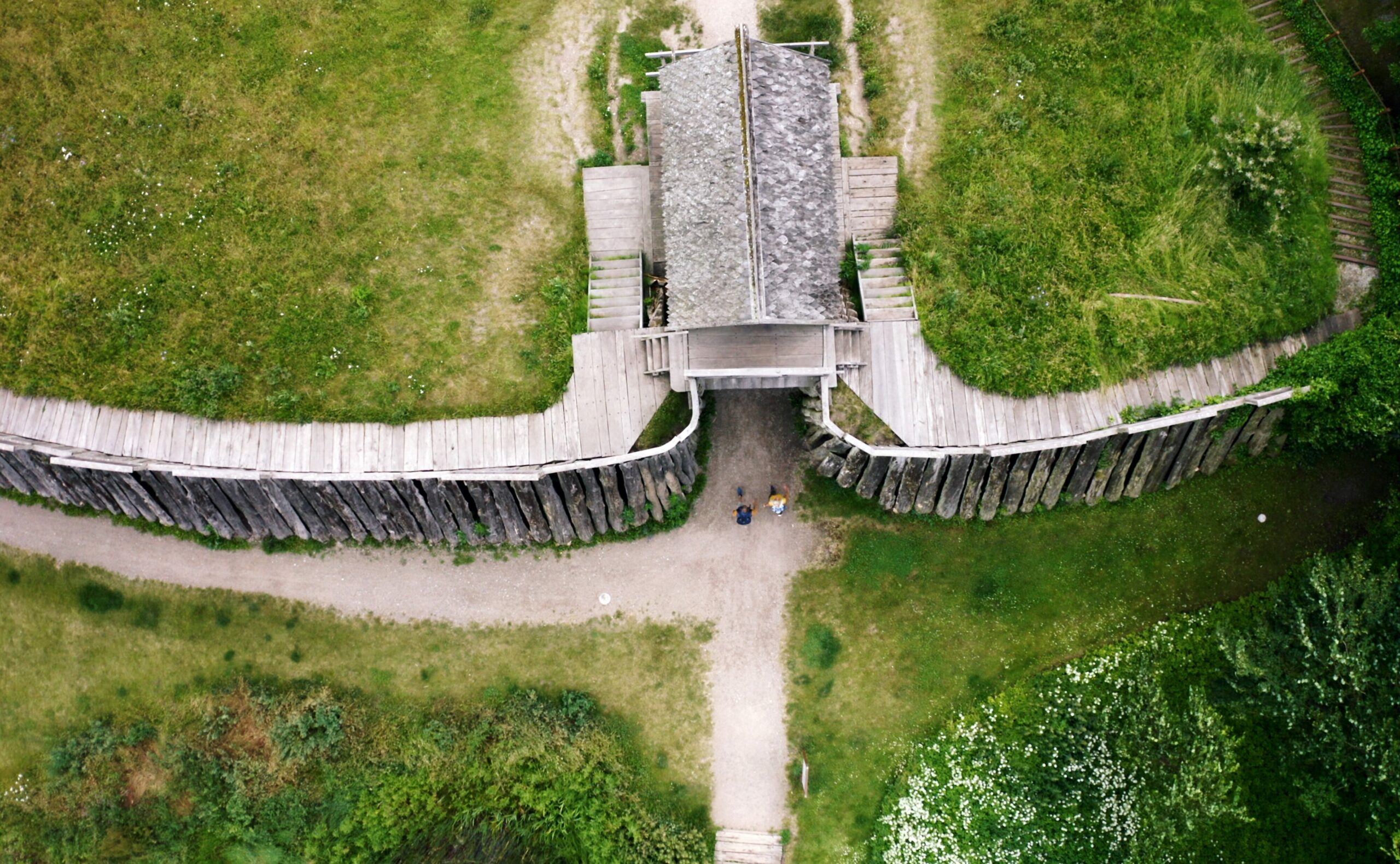
From discovery to renewal
In 1988, traces of a Viking ring fortress, called Trelleborg, were found, which gave its name to the city. Trelleborgs in Denmark are circular fortresses with dimensions, including palisades, moats, and gates. Trelleborgen was rebuilt to a quarter in the middle of the city in 1995, including a medieval farm.
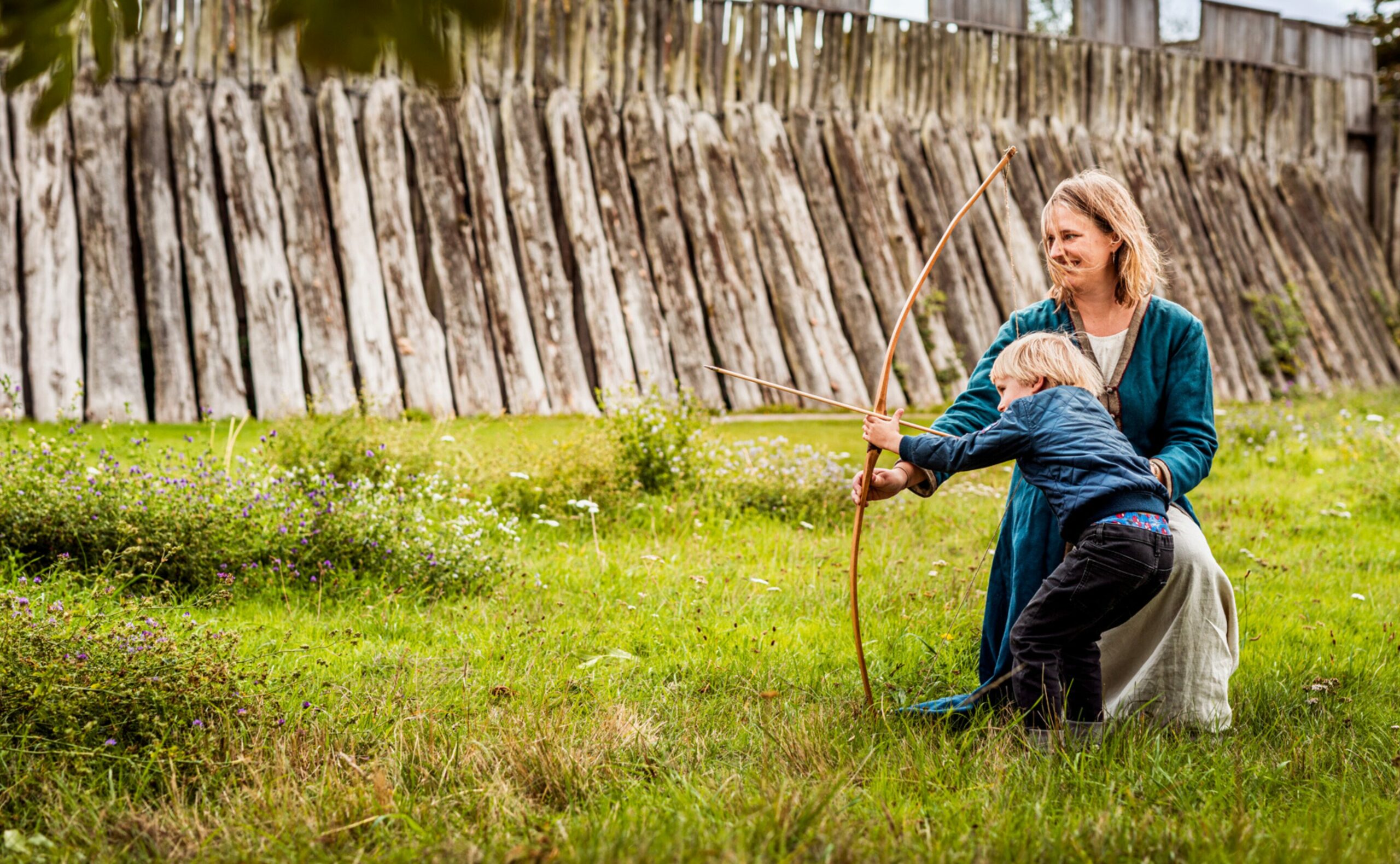
Visit Trelleborgen
Takes you back a thousand years with exciting stories ranging from Viking battles to everyday life. During the summer, activities are offered for both adults and children – Viking games, blacksmithing, crafts, archery, and more. Every year, on the second weekend of July, Trelleborgen is filled with Vikings. Then there’s a market, Viking weddings, and the “Battle of Trelleborgen”.
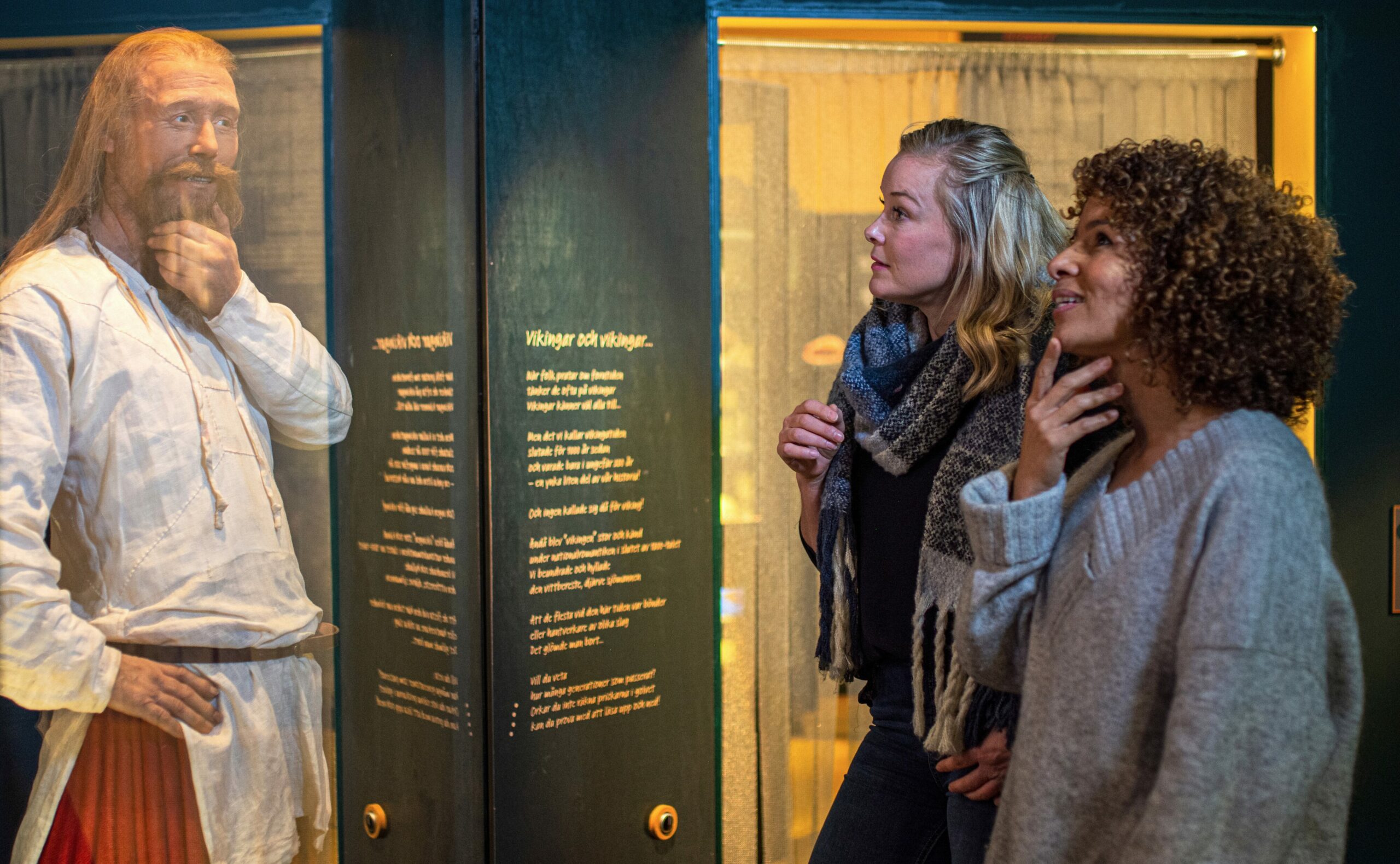
Öga mot öga - exhibition
Öga mot öga or in English “Eye to Eye”, is a unique, permanent exhibition at Trelleborg Museum that takes you on a journey from the Viking Age and beyond. See scaled reconstructions of the renowned Viking trader and the Queen from Vemmerlöv. The 7000-year-old graves of Skateholm provide a unique testimony to people like you and me, with the same emotions but entirely different abilities.”
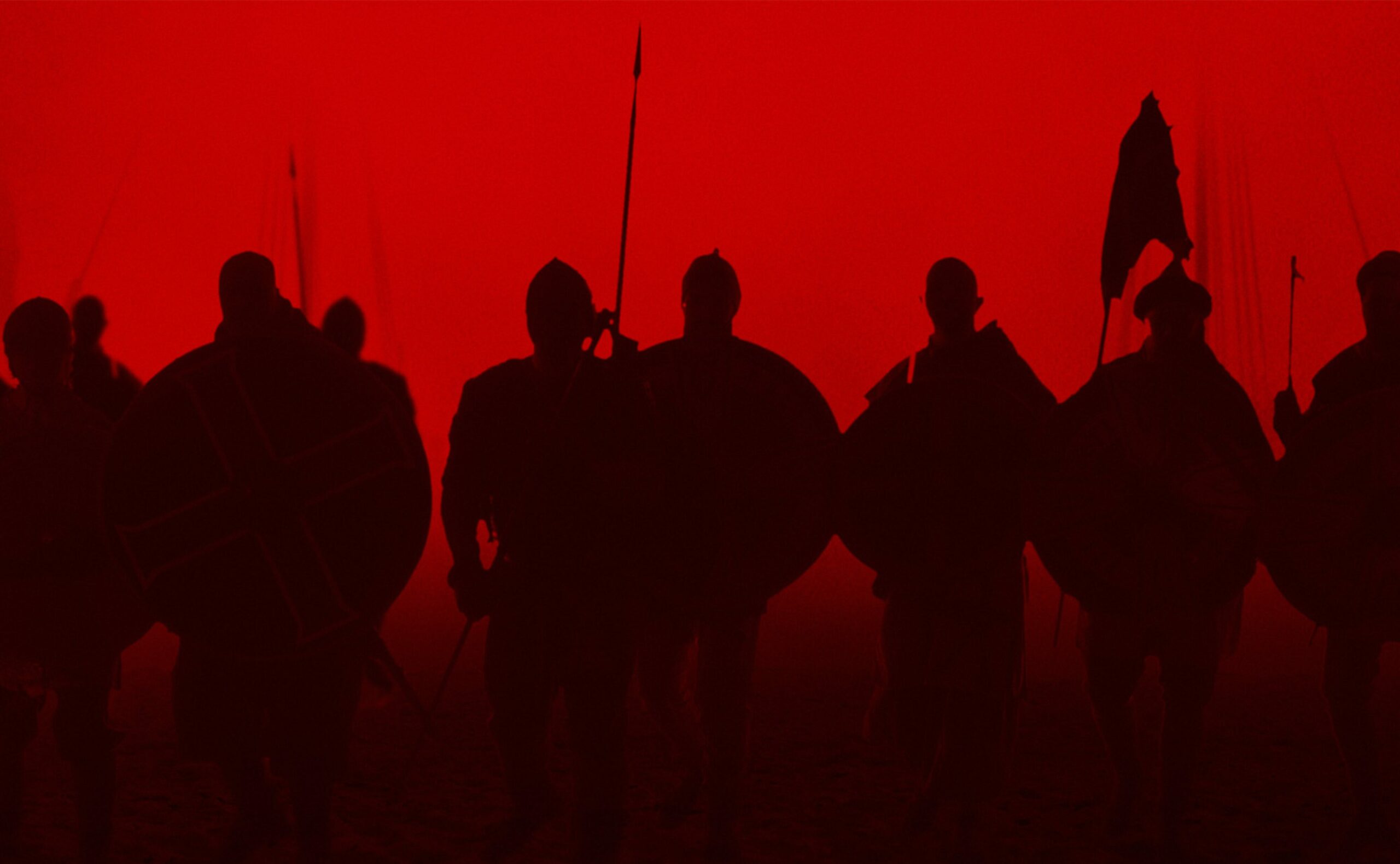
Borgen vid havet
This is a brand-new exhibition at the Viking Museum Trelleborgen. Here, you will accompany the mythical völva, a Viking-age shaman, in a narrative about the history of the site. The exhibition showcases artifacts from the Vendel and Viking-age settlement, recreated crafts, and audiovisual productions. With archaeology as its foundation, an enchanting experience awaits both young and old.
Guided tour everyday at 2 p.m
Read more
Experience the Viking Age
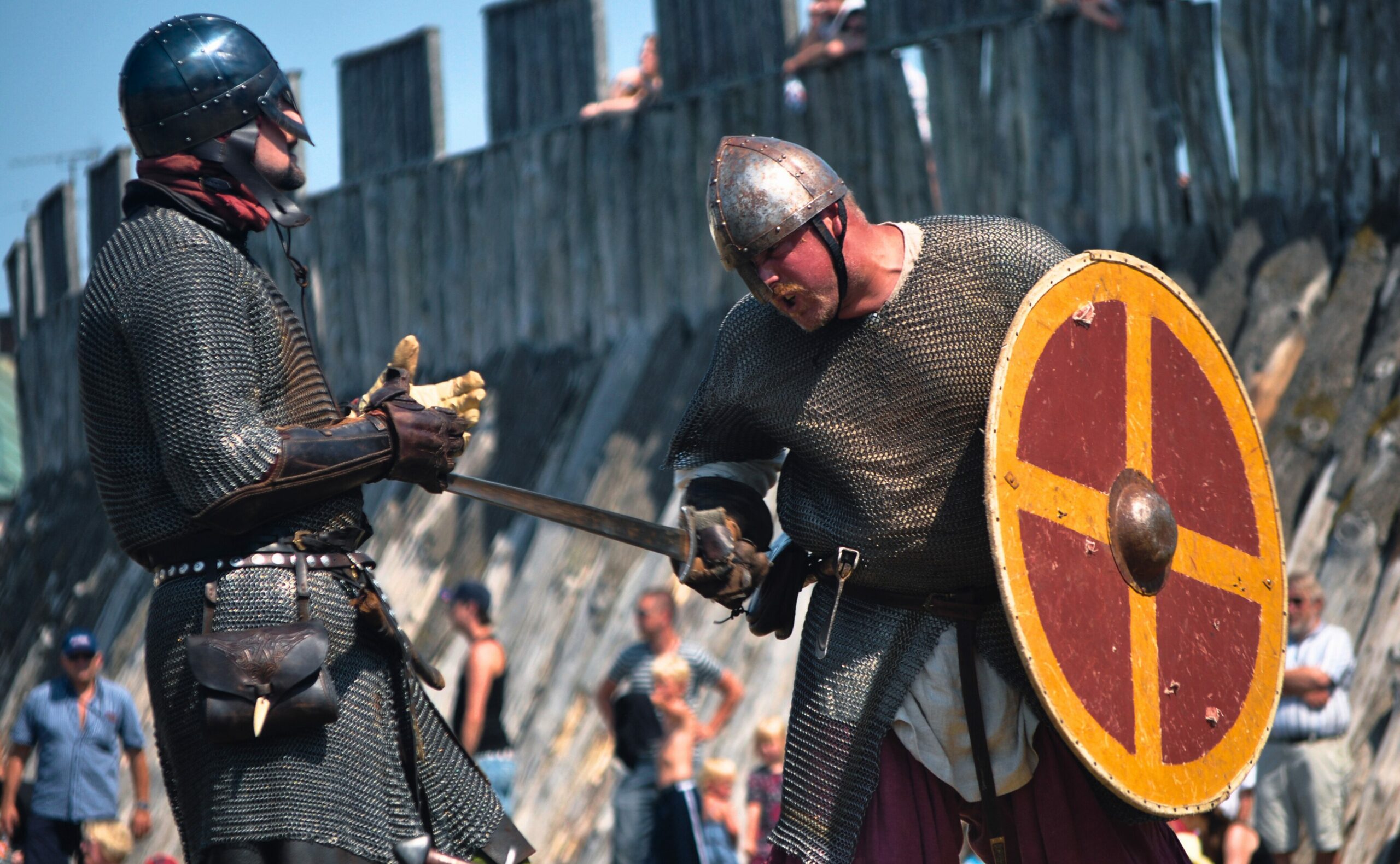
The Battle of Trelleborgen
From July 5th to 7th, we gather for cherished reunions and new encounters. There will, of course, be a market, crafts, Viking games, try-outs, and last but certainly not least, the battle where the Vikings clash. Come and experience the Viking Age together with knowledgeable craftsmen, vendors, performers, history buffs, enthusiasts, and archaeologists! Smell the scents from the fires and cheer on your favorite Vikings in the battle for the fortress. At the same time, enjoy a delightful Viking market with fabrics, jewelry, and crafts from near and far.
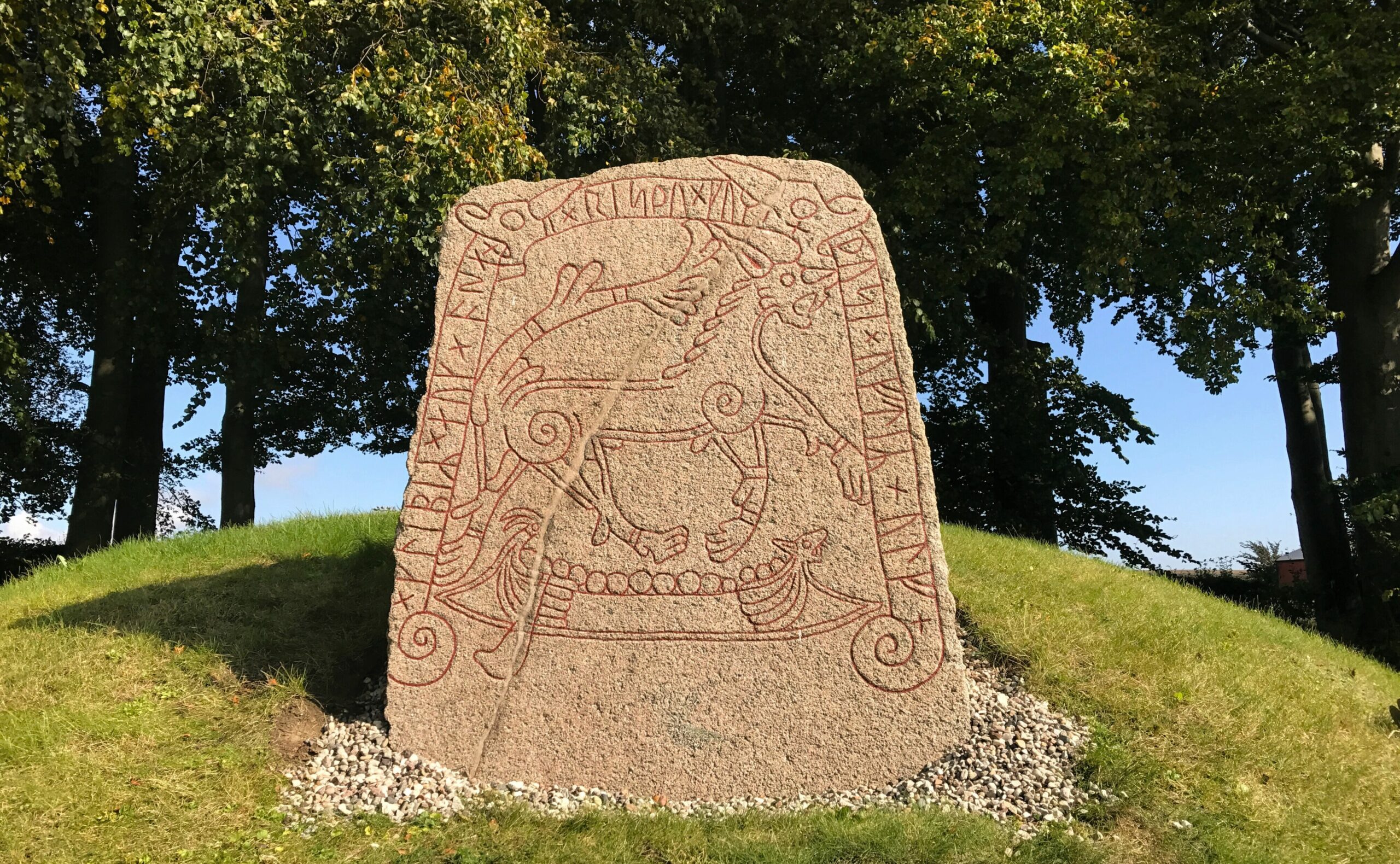
The Rune stone in Tullstorp
20 kilometers east of Trelleborg, in the memorial grove at Tulls- torp cemetery stands one of Scandinavia’s most beautiful rune stones. Just like Trelleborgen it dates back to AD 980 and the reign of King Harald Bluetooth. The runes in the stone say, ”Klibir and Åsa erected this stone after Ulf ”. There are also pictures of a stately animal and a ship. The runes and pictures tell us that in the 980s, there was a woman and a man in Tullstorp who left a memorial to another man. They chose to decorate the stone with images that, according to archaeologists, indicate connections with the Eastern Emperor.
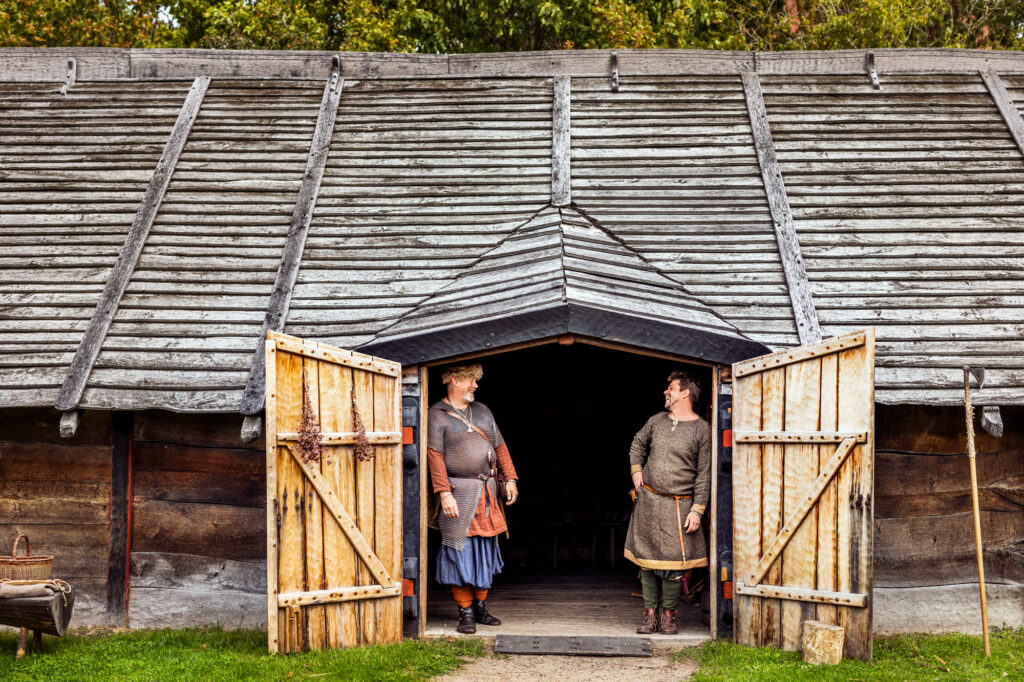
The Viking farmstead
In Trelleborgen’s open-air museum, a reconstructed farm features a longhouse, pit houses, and a garden. The longhouse serves as the main dwelling, reflecting domestic life, while the pit house accommodates the farm’s blacksmith forge. The garden is used to cultivate crops like beans, cabbage, flax, and plants. Inspired by Late Iron Age farms, the current construction mirrors the historical framework of longhouses supported by paired poles. These farms, located within walking distance north of the fortress.
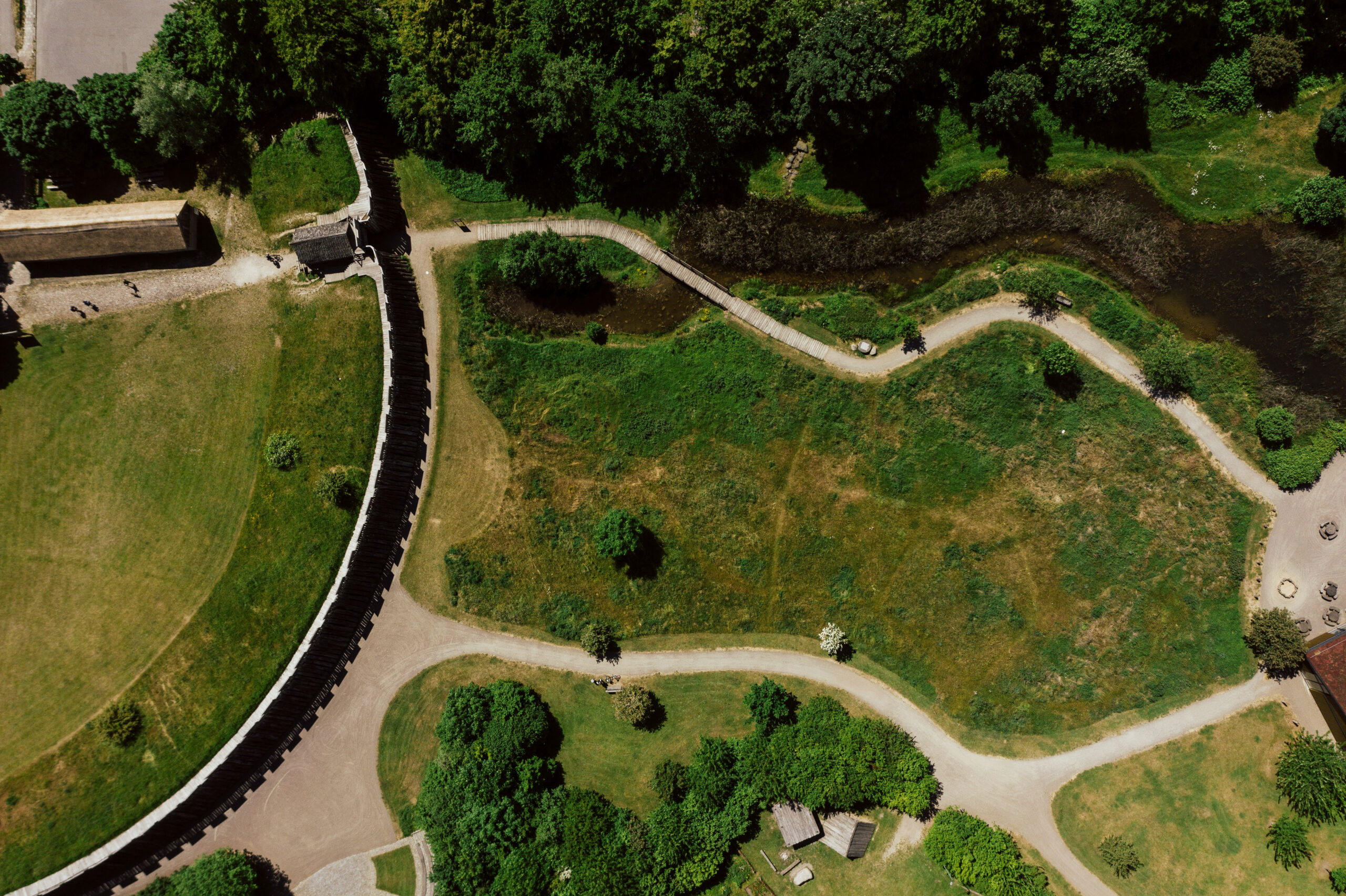
Visit Trelleborgen
The guided tour takes you back a thousand years with exciting stories ranging from Viking battles to everyday life. During the summer, Trelleborgen offers activities for both adults and children – stories, runic writing, Viking games, blacksmithing, crafts, cooking, archery, and more. Every year, on the second weekend of July, Trelleborgen is filled with visiting Vikings. There are markets, Viking weddings, and the “Battle of Trelleborgen”.


